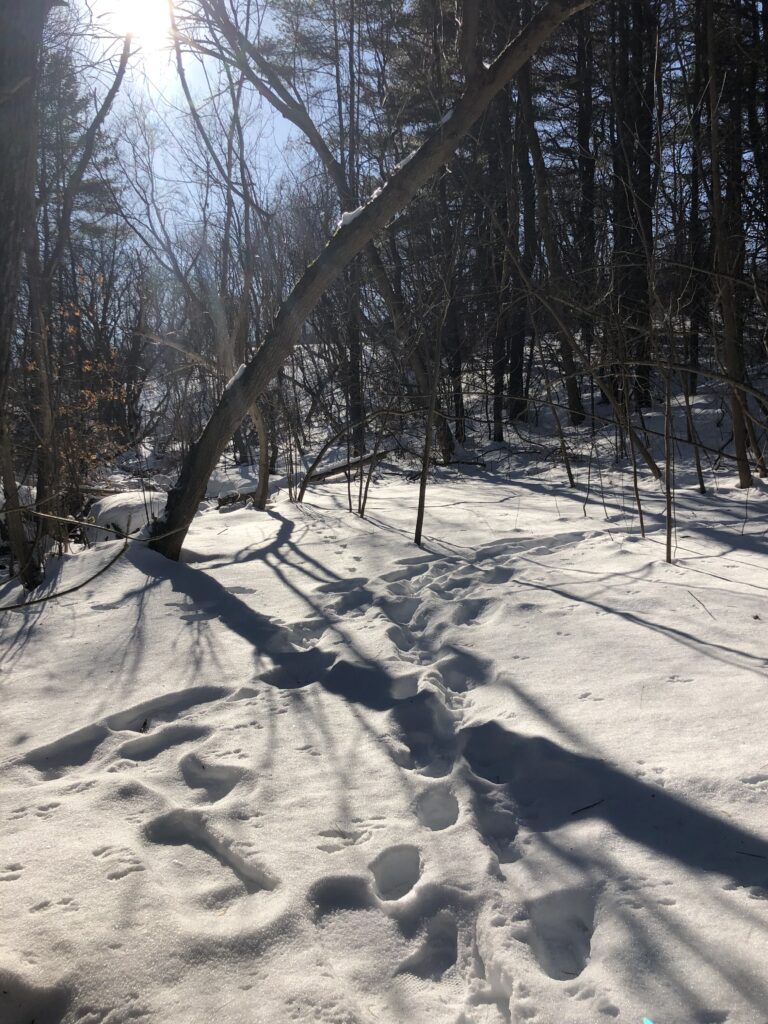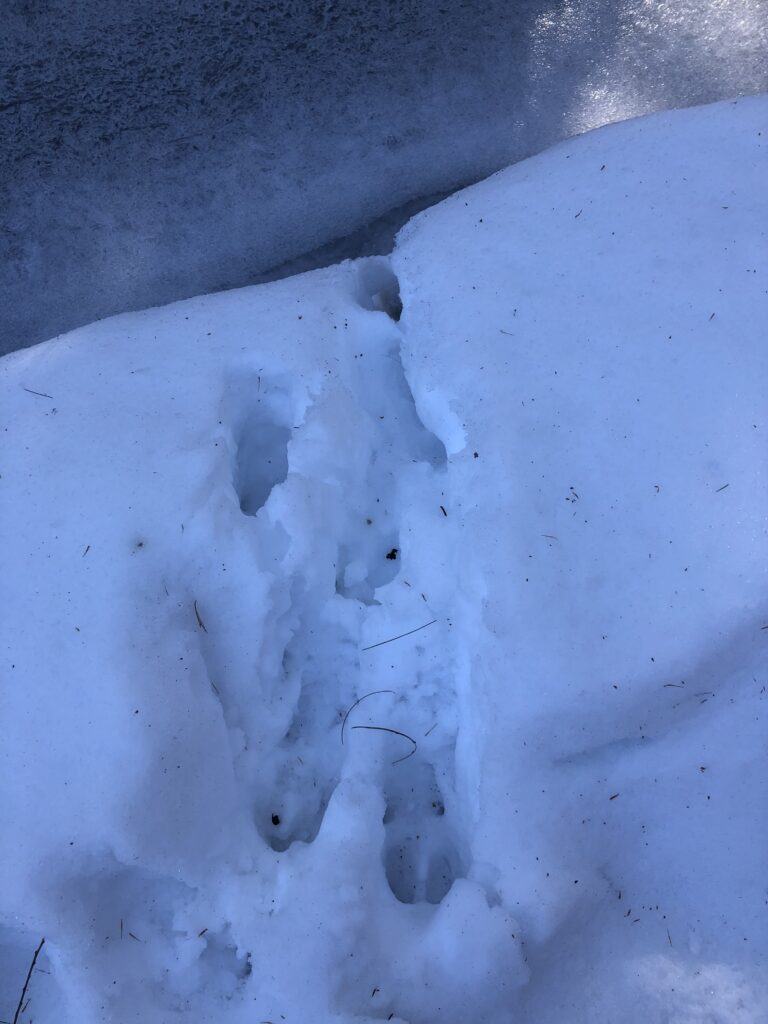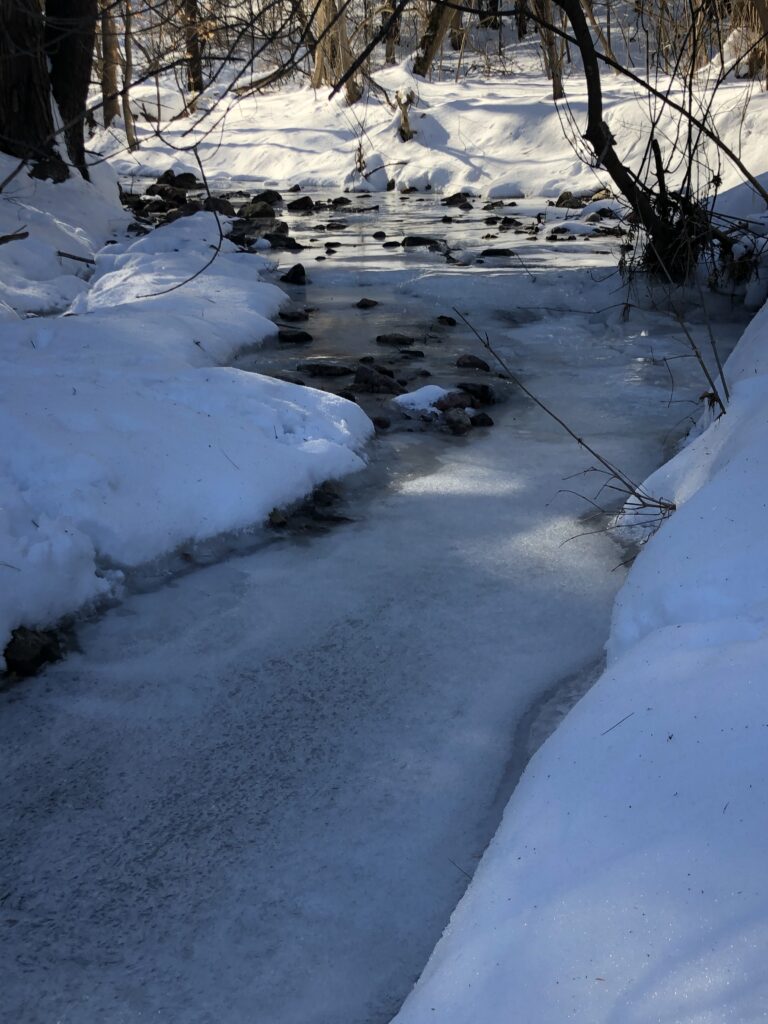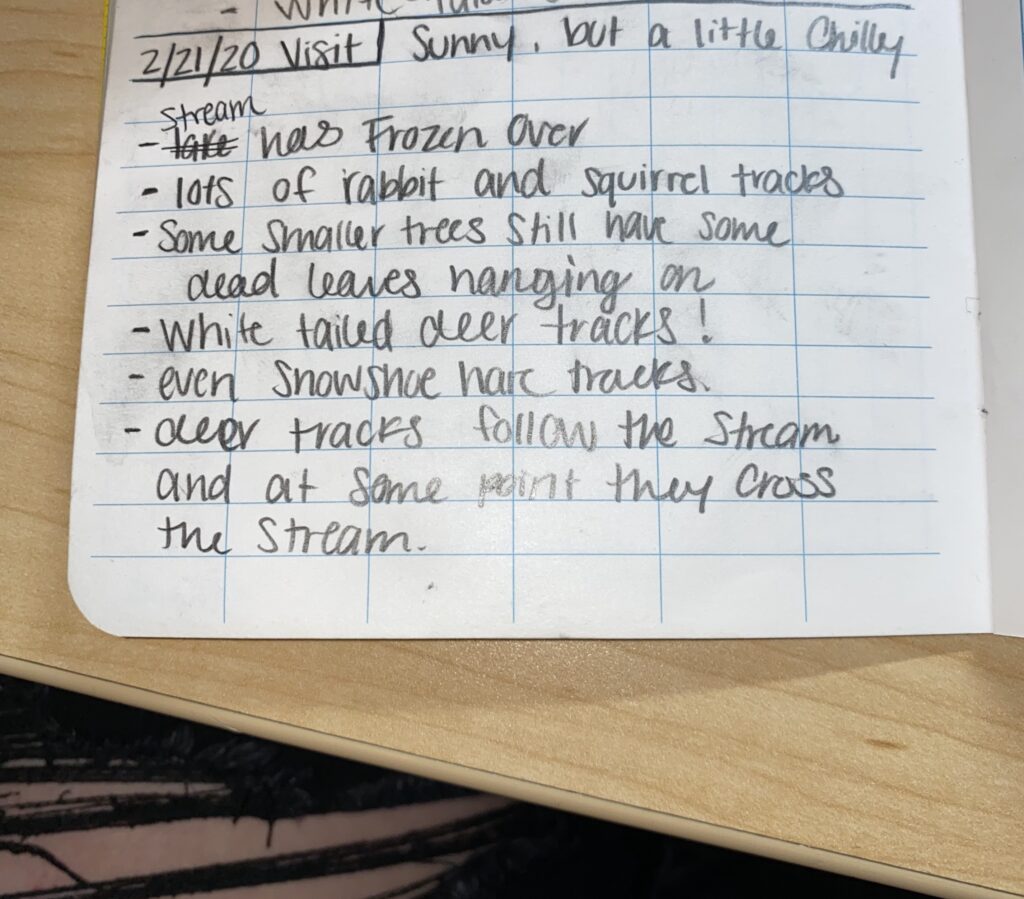I went back to my spot in Centennial this month, mainly focusing on evidence of animals. And of course, to see the phenology changes. A picture of my spot is included below (see Figure 1).

Out at my spot in centennial, I found evidence of quite a few species! I found rabbit, squirrel, hare, and deer tracks. The most interesting tracks to follow were probably the White Tailed Deer tracks (see Figure 2). These deer live and spend their time in deer yards, which are areas that are located usually in coniferous woods where there is less snow due to the trees keeping the snow above their branches. The deer stay in these yards because it is easier for them to move around due to less snow on the ground. During the day deer mainly spend their time laying down and sleeping. They get up around dusk to eat and then usually spend the rest of the night roaming around until dawn, when they lay down again (Holland, M & Kaneko, C pg 421). These deer mainly feed on twigs in the winter, and leaves and fruits in the summer (Vermont Fish and Wildlife). Coyotes will prey on vulnerable deer, but are not significant predators (Holland, M & Kaneko, C pg 420). The most significant predators to deer are probably humans. Humans are probably the main factor in controlling deer population, as deer hunting is very popular in Vermont.

Following the deer tracks was pretty interesting. The deer tracks that I found were walking next to the stream for a while, and then the tracks finally crossed the frozen stream (see Figure 3). At the beginning of the tracks, there was a bunch of dead maple leaves kicked around. This could have been the deer looking and digging around for twigs to eat. Also, at some point the deer tracks went right up to a birch tree. I could not find any evidence of the deer chewing on any of the branches or twigs, but it definitely interacted with the birch tree.

This week specifically has been a lot warmer than it traditionally is in February. It hit 51ºF at some point during the week. It seemed as though there were a lot more birds out and chirping and more evidence of animals due to the warmth. The stream had frozen over since the last time I was at my spot, and trees are still bare, with some of the younger deciduous trees still hanging on to their dead leaves. The area is still covered in snow, but with all the animal activity my spot was not as quiet as last month, I think it is because of the warmth. When I went to my spot, it was probably about 38ºF out.

Works Cited
- Holland, M., & Kaneko, C. (2019). Naturally curious: a photographic field guide and month-by-month journey through the fields, woods, and marshes of New England. North Pomfret, Vermont.: Trafalgar Square Books.
- White-Tailed Deer. (n.d.). Retrieved from https://vtfishandwildlife.com/node/609
